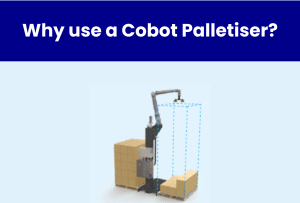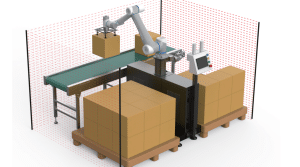Cobots: Getting started
The use of collaborative robots, or cobots, is becoming increasingly popular in the industrial sector. They are designed to work alongside humans and can help alleviate some of the most tedious tasks in manufacturing and production. But, with all the different types of cobots out there, getting started can be daunting. Here are five essential tips from reprogrammable cobot expert, Peter Shafe, to help you get up and running quickly with your cobot.
First off: What is a Cobot?
Cobots, or collaborative robots, are a relatively new type of robot designed to work safely and effectively alongside humans in a shared workspace. Cobots were first introduced in the early 2000s, and since then they have been gradually gaining popularity in industrial and commercial settings. The development of cobots has been driven largely by the growing need for flexible automation solutions that can help companies increase productivity while maintaining safety standards. As a result, cobots have become an essential part of many production lines and manufacturing operations.
Cobots are differentiated from traditional industrial robots in a few ways:
- Cobots are designed to work alongside humans in a shared workspace. Cobots are equipped with sensors and safety features to prevent injuries of those working with and around the cobot.
- Cobots can be adjusted to fit the needs of different tasks with intuitive user interfaces to make them easy to program. They are often used in industrial settings to automate tedious, repetitive tasks and help increase productivity.
- Cobots are typically programmed to perform simple repetitive tasks. Unlike some fully automated industrial robots, cobots fit well in a semi-automated environment or ones which have smaller batch sizes and need a flexible automated solution.
How to get started with a Cobot
It is important to understand what the needs of your business and process are. These will help drive the design specification which will decide whether your cobot implementation is successful.
1. Identify the purpose of the robot
The first step in creating a design specification for a robot is to identify what the robot will be used for. This will help decide the features and capabilities that need to be included in the design. Cobots can be used for packing, pick and place, welding, CNC machining, and anything where there is a close workspace between workers and robots.
2. Specify the environment
Once the purpose of the robot is identified, the environment must be specified. This will help inform the safety controls in the next step. This may include the reach of the robot, the type of job, the speed at which it will move, and the environmental considerations
3. Conduct a risk assessment and determine safety controls
Depending on the answers to the items above the risks of the cobot can be identified. We suggest using an “FMEA” style review including Likelihood, Severity and Detection criteria to establish which type of control is appropriate for each risk. The options for the cobot’s safety controls include proximity sensors, force sensors, visual sensors, speed controllers, interlocks and physical barriers. An understanding of ISO/TS 15066:2016, which specifies the safety requirements for cobots and their work environment, is essential.
4. Agree with all stakeholders on the success criteria
The stakeholders for installing a cobot could be the existing workforce, the supervisors, the management the HSE representative along with many others. The group need to reach an agreement specific to the project. The success criteria should be established using a SMART methodology and it could be using goals such as productivity, safety, or quality.
5. Review the performance and adapt the cobot to your needs
The huge advantage of a cobot is its adaptability to new situations. It is crucial to review the performance of the Cobot against the success criteria and make improvements. Either small tweaks in an existing role or by redeploying it in another capacity.
Ready to get your first cobot?
By following these five essential tips, you can be well on your way to getting the most out of your cobot. With the right setup and guidance, cobots are a great addition to any industrial setting and can help streamline production processes. Ready to get started? Contact us today to learn more about how cobots can help your business succeed.





